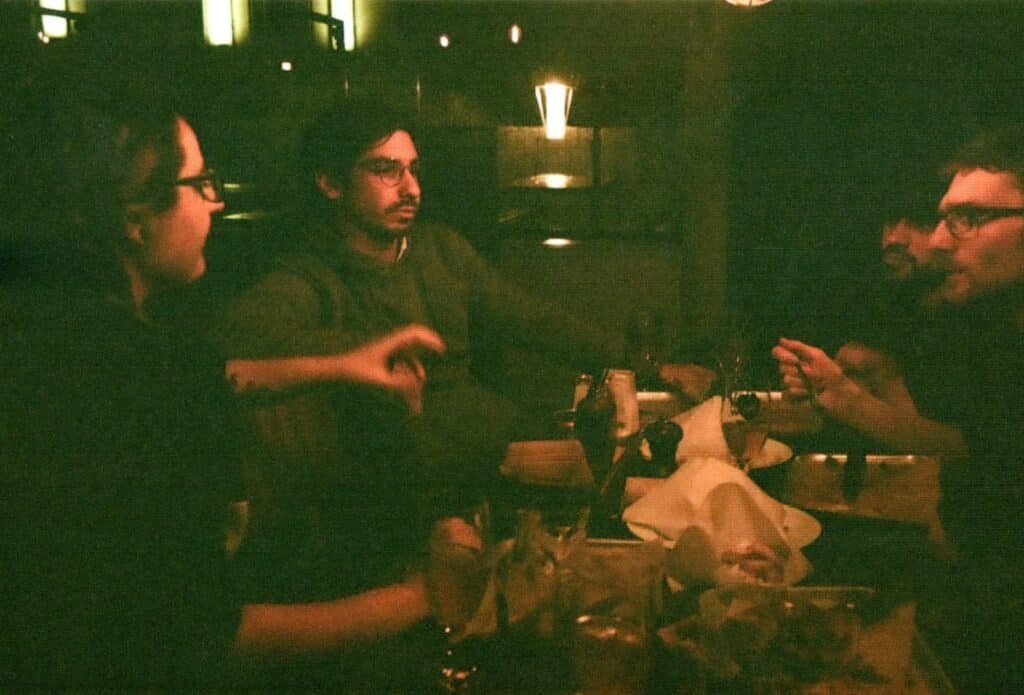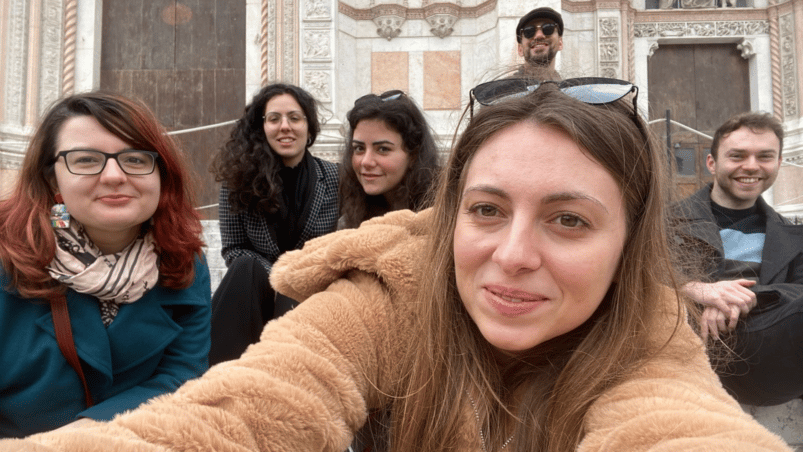Getting a job in the cultural heritage sector has become a difficult process of cv-building and working for little – or sometimes no – money. All the more reason why the HeritaGeeks, an informal group of passionate young heritage professionals, decide to set up a webinar for the upcoming UNESCO conference about including young professionals in the scene. Romanian geographer Miruna Găman is one of the initiative takers and believes it is about time the sector has a discussion about this: “We want to bring in as many perspectives as possible.”
The HeritaGeeks hope the webinar “Is the Heritage Sector Sustainable for Young Professionals?” on 2 September can help pinpoint and discuss “taboos” that seriously impact the way the heritage sector works now. As two of the HeritaGeeks will present a pitch, five young heritage professionals will also have their say. The topics include the effects of policies in which sustainability often overlooks the social and economic rights of those who are part of the sector, especially young researchers and professionals.
Raw discussion
It is one of the reasons why the HeritaGeeks feel organising the webinar is highly necessary. They noticed how they all face similar challenges such as sacrificing labour rights, an abundance of precarious jobs, un- or poorly paid work outside the sector or irregular hiring and consequent lack of social assistance, which leads to unstable and vulnerable living conditions.
The goal of the webinar is mainly to get already established professionals and young people in the same room for a sensible talk. “Apart from the presentations we will organise breakout rooms where attendants from different backgrounds and regions can discuss issues and think about solutions together”, Găman tells EHT. “The key is to have a very raw, honest and open discussion about the challenges we have encountered so far. And what we can do about them.”

Taken seriously
But why is it so difficult for young people working in heritage to navigate the sector? “There are not many opportunities around, and they often require years of experience”, explains Găman. She feels young people want to be taken more seriously: “Years of effort for a degree, PhD and tons of fieldwork and experience shouldn’t amount to nothing: this generation is very serious about heritage and working with it.”
Money – or the lack thereof – is often a big problem for young people trying to find a job in heritage, Găman notices. “It can be very stressful when you have to work for an unfair wage because there simply aren’t many jobs around”, she says. “You have to work multiple jobs to receive a decent income or rely on your family. And people that can’t do this are simply excluded from working with heritage. There are so many people that are qualified to work for regional or national institutes, that have fresh ideas, but have to quit the sector because of this.”
How can you think about saving heritage, if you don’t know whether you still have a job tomorrow?
Găman realises that not everyone will leave for the same reasons: “There are some parts of your life you can’t control, there are so many variables. But how can you think about saving heritage, if you don’t know whether you still have a job tomorrow?” She feels the sector has a systemic problem that should be addressed, but young people cannot do that alone. “We are at a turning point, I feel. Once institutes, organisations and people start talking about these issues, we can begin to take small steps to dismantle the systemic issues.”
Lesson in empathy
Encouraging more teamwork between people with different professional and regional backgrounds could be the key to opening up the sector for young, enthusiastic professionals. “If we have an open and constructive dialogue, the discussion could also become a lesson in empathy. And that is what heritage can be: a great lesson in empathy”, Găman points out. “If you let one hundred people look at one building, you will get one hundred different perspectives. But we still can and need to respect each other’s views.”
The HeritaGeeks themselves can be regarded as a good example of just that. “We are with twelve, but we have members from across Europe: Romania, Portugal, Italy, Germany and the list goes on”, Găman says. “We kept in touch after we met at a training in Poland, and despite our cultural and professional differences, we work really well together as a group.”
If the sector is not functioning because young people experience problems, everyone in the field will suffer from it. We are all in this together
One final point Găman wants to emphasise is that everyone should be concerned about dealing with these taboos. “Despite the fact that some presenters at the webinar are affiliated to an organisation, their opinions on the matter are independent. But discussing these taboos is something we feel needs to be said.”
There will be a lot of issues that need to be unpacked, but Găman and the other HeritaGeeks are already certain that a team effort is desperately needed: “If the sector is not functioning because young people experience problems, everyone in the field will suffer from it. We are all in this together.”
Interested in joining the discussion as a young heritage professional, or as someone working in the field for quite some time? Registrations are open until 26 August.

